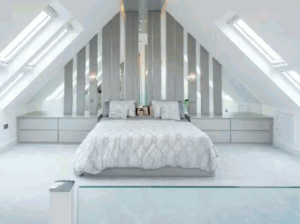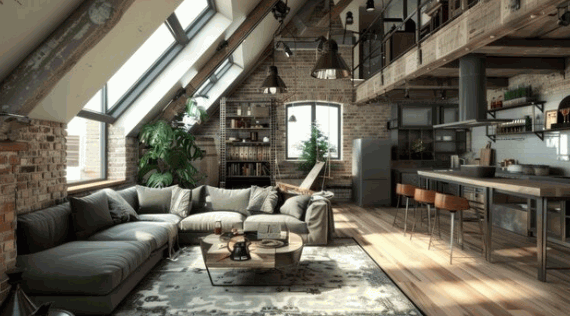Are you considering maximizing your home’s space and value? A loft conversion or adding a loft room could be the perfect solution, transforming unused attic space into a functional area tailored to your needs.
This article explores the various types of loft conversions, the benefits they offer, and the factors influencing their costs, including typical prices and building regulations.
Whether you’re dreaming of a cozy home office or an additional bedroom, this guide covers the average costs, cost of loft conversions, and savvy ways to save money on your project. Dive in to discover all you need to know!
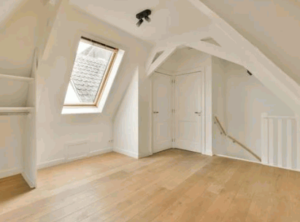
What Is A Loft Conversion?
A loft conversion is a popular home renovation project that transforms an unused loft space into functional living areas, such as a bedroom, bathroom, or office, thus providing extra living space. This home improvement not only enhances the comfort and utility of your property but also significantly increases its value, making it an attractive option for homeowners looking to maximize their investment. However, undertaking a loft conversion involves navigating through various building regulations, obtaining planning permission, and potentially seeking a party wall agreement or bat survey to ensure compliance with local laws and standards.
Learn about: How To Make A Loft Conversion Into A Bedroom
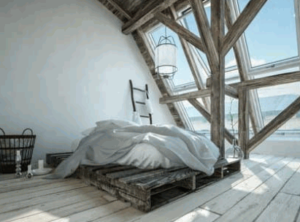
What Are The Different Types Of Loft Conversions?
There are several types of loft conversions available, each designed to suit different architectural styles and homeowner needs. The most common types include dormer loft conversions, which extend outwards from the roof; mansard roof conversions, which create a flat-top profile; hip-to-gable conversions, which change the sloped roof into a vertical wall; and bungalow loft conversions, which utilize the lower height of bungalows to maximize space. Choosing the right type of conversion is essential, as it impacts the overall design, space, and potential increase in property value, as well as the cost of loft conversion.
Dormer Loft Conversion
A dormer loft conversion is a popular choice among homeowners looking to create extra living space by adding a vertical structure that extends from the existing sloped roof, allowing for greater headroom and usable area that can be tailored to fit the specific needs of modern family life. This type of loft conversion is highly recommended for properties in London and the South East where maximizing space and increasing property value are key considerations.
These additions not only enhance the aesthetic appeal of the home but also significantly increase its market value. In terms of design features, dormers come in various styles, including flat, gable, and shed designs, each offering unique visual characteristics and functional advantages. Engaging with experienced tradespeople ensures the quality and longevity of the conversion.
Maximizing space effectively often requires careful planning. Homeowners benefit from engaging architects and builders, who bring their expertise to the table, ensuring that the design fits within the existing structure while adhering to local building regulations and standards.
- Increased natural light through larger windows
- Enhanced ventilation options for better air circulation
- Additional room configurations that can serve as bedrooms, offices, or playrooms
When considering a dormer loft conversion, it’s essential to also consult with local authorities and use the planning portal to navigate any building regulations that may apply, ensuring that the new space meets all necessary criteria while providing a safe and comfortable environment.
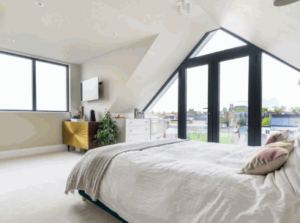
Mansard Loft Conversion
Mansard loft conversions are characterized by their unique flat-roof design and steep walls, providing a substantial increase in additional living space, often utilized for bedrooms or bathrooms.
This architectural style not only enhances aesthetic appeal but also transforms otherwise underutilized areas of a home into functional, inviting spaces. Homeowners appreciate how a mansard loft conversion can significantly elevate the property’s value while offering flexibility to accommodate various layouts, including expansive open-plan designs.
- The increased head height allows for larger windows, flooding the new space with natural light.
- Such conversions typically do not require extensive groundwork, making them a less disruptive option.
In terms of regulations, it is essential to navigate planning permission requirements, which can vary considerably based on location and the specifics of the existing structure.
Engaging skilled building control surveyors is crucial as they ensure compliance with the building code, inspecting the site and advising throughout the conversion process, effectively safeguarding quality and safety. It’s also important to consider architect fees and the involvement of other professionals during different loft conversion stages.
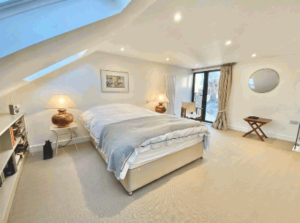
Hip-to-Gable Loft Conversion
A hip-to-gable loft conversion is an innovative way to transform the design of a home with a hipped roof by replacing it with a gable end, effectively increasing the available space and enhancing property value. This change is also known as a hip to gable conversion, offering homeowners additional room configurations. This transformation not only maximizes headroom but also provides opportunities for more functional areas, such as additional bedrooms or home offices, all while significantly improving the overall aesthetic appeal of the property.
The process of converting a hip to gable roof involves several key stages that homeowners should be aware of:
- Initial Assessment: An evaluation of the existing structure is critical to determine feasibility and the potential for design changes.
- Design Planning: Working with an architect or designer helps create a space that is both practical and visually appealing, tailored to the homeowner’s needs.
- Planning Permissions: Utilizing the planning portal is essential for securing necessary approvals, especially since regulations may vary by location.
- Construction Phase: Once approved, the actual construction begins, which typically lasts several weeks and requires skilled labor.
- Finishing Touches: After structural work is complete, interior design elements can be implemented to bring the new space to life.
Embracing a hip-to-gable conversion is a remarkable way to enhance living space and adapt the home to modern needs while significantly impacting its value and character.
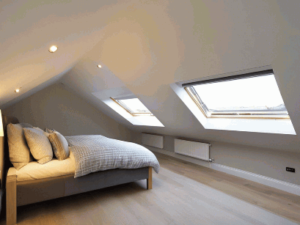
Velux Loft Conversion
Velux loft conversions are designed to maximize natural light by incorporating roof windows into the existing loft space, resulting in bright and airy rooms without altering the roof structure significantly. This type of conversion is particularly beneficial for bungalow loft conversions due to its efficiency.
This method of conversion not only boasts aesthetic advantages but also presents a range of cost-effectiveness benefits that make it an appealing choice for homeowners. Rather than the extensive remodel that traditional extensions often require, Velux conversions typically demand less disruption and a lower overall financial investment.
Building regulations are crucial in any home improvement project, but with Velux conversions, compliance becomes a smoother process, alleviating the stress associated with permissions and inspections.
- Reduced architect fees compared to other conversion types
- Streamlined planning process
- Consultants may be required, but at lower rates
Ultimately, this combination of affordability and regulatory simplicity makes it a worthwhile consideration for those looking to enhance their living spaces. Hiring experienced tradespeople ensures the project is completed efficiently and to high standards.
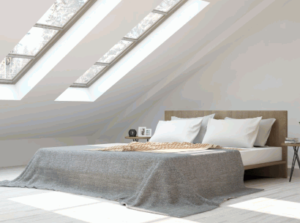
What Are The Benefits Of A Loft Conversion?
Loft conversions offer a multitude of benefits, making them a highly sought-after home improvement option. They provide extra living space that can be tailored to meet the unique needs of homeowners, whether that be an additional bedroom, office, or entertainment area. Furthermore, a well-executed loft conversion can significantly increase the property’s value, making it an attractive investment for those looking to enhance their home’s marketability. Additionally, they often come with fewer restrictions compared to other types of extensions, allowing for more flexible conversion plans.
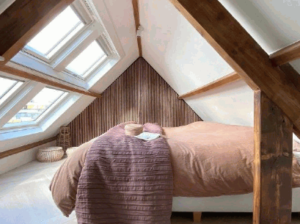
What Are The Factors That Affect The Cost Of A Loft Conversion?
The cost of a loft conversion can vary significantly based on several key factors, including the type of conversion chosen, the size of the space being transformed, and the complexity of the design. Typical prices can range widely, with elements such as building regulations compliance, planning permission, and even architect fees playing crucial roles in the overall budget. Understanding these factors can help homeowners make informed decisions and effectively manage their conversion plans. The cost of a loft conversion can vary significantly based on several key factors, including the type of conversion chosen, the size of the space being transformed, and the complexity of the design. Typical prices can range widely, with elements such as building regulations compliance, planning permission, and even architect fees playing crucial roles in the overall budget. Understanding these factors can help homeowners make informed decisions and effectively manage their conversion plans.
Size Of The Conversion
The size of the conversion is a primary determinant of the overall cost of a loft conversion, as larger spaces require more materials, labor, and potentially additional modifications to meet building regulations.
The overall dimensions of the loft influence not only the amount of materials needed but also extend the duration of the project, affecting labor costs significantly. Larger spaces require more tradespeople and a longer period for completion.
For instance, changes in:
- square footage
- structural reinforcement
- insulation requirements
can impact the budget. Various regions have their own regulations and zoning laws that may dictate structural changes needed for larger conversions. These guidelines ensure safety and compliance but can add to expenses. Therefore, planning for a conversion involves considering both the immediate costs associated with size and any potential future regulatory fees that may arise. Additionally, a bat survey might be required depending on local wildlife regulations.
Type Of Conversion
The type of conversion also plays a crucial role in determining costs, with different styles such as dormer, mansard, and hip-to-gable each carrying their own typical prices due to variations in design complexity and labor requirements.
When considering the overall financial aspect of home transformations, understanding the range of conversion costs is essential. Each conversion style not only alters the aesthetic of a property but also its budgetary implications, including architect fees and potential party wall agreements.
- Dormer conversions: These generally range from $15,000 to $50,000, depending on size and structural requirements.
- Mansard conversions: They tend to be more intricate and typically cost between $30,000 and $100,000.
- Hip-to-gable conversions: Usually, this type is priced between $35,000 and $80,000, influenced by the existing roof structure.
Homeowners should always evaluate these costs in relation to their overall renovation budget, as this can significantly impact financial planning.
Location
The location of the property significantly influences the overall cost of a loft conversion, as labor prices for skilled tradespeople can vary greatly between urban areas such as London and more rural locations. Additionally, a loft conversion in a prime London location can significantly increase property value.
Along with labor costs, proximity to essential services and availability of specific tradespeople play pivotal roles in determining the renovation budget. For instance, in densely populated urban centers, the demand for professionals such as electricians, plumbers, and carpenters often results in higher wages due to competition. Conversely, rural areas may experience a scarcity of these workers, leading to limited options and potentially longer wait times for service.
- Regional planning regulations could also affect costs, as different areas have unique requirements that may necessitate additional permits and compliance checks.
- Given this, potential loft owners should consider not only local prices but also how these regulations may align with their budgetary restrictions.
As a result, understanding the geographic implications can greatly enhance strategic financial planning for any conversion project.
Materials Used
The choice of materials used in a loft conversion can greatly impact the cost, with high-quality materials leading to increased expenses but also enhanced durability and aesthetic appeal.
Various materials such as timber, steel, and insulation can vary significantly in price, which means careful consideration is essential.
While opting for premium materials may seem appealing due to their long-term benefits, it is crucial to weigh these options against budget constraints.
- For instance, using more affordable insulation can initially save costs but might lead to higher energy bills down the line.
- On the other hand, selecting expensive roofing materials could ensure longevity, reducing maintenance costs over time.
Architects play a pivotal role in selecting suitable materials that align with the project’s vision and the client’s budget.
Building control surveyors also contribute by ensuring that the chosen materials comply with safety and building regulations, which can ultimately influence total expenses.
Making informed decisions about materials can strike the perfect balance between quality and budget, making the loft conversion a worthwhile investment.
Labour Costs
Labour costs are a significant component of the total cost of a loft conversion, as they reflect the rates charged by skilled tradespeople and any specialized labor required for the conversion.
These expenses can vary widely depending on the complexity of the project and the specific services needed. For instance, carpenters typically charge around $50 to $80 per hour, while electricians may have rates ranging from $50 to $100 per hour. Plumbers usually set their prices between $55 and $90 per hour.
It’s essential to consider that hiring qualified professionals not only ensures compliance with safety standards but also enhances the overall quality of workmanship, which can ultimately save money in the long run.
- Architect fees: $60 – $120 per hour
- Structural engineer: $70 – $140 per hour
- General labor: $30 – $50 per hour
Investing in skilled trades can significantly affect the success of the loft conversion, contributing to a more efficient build process and possibly preventing costly mistakes.
Permits And Planning Permission
Obtaining the necessary permits and planning permission is crucial in the loft conversion process, as failing to comply with building regulations can lead to costly delays and complications.
The significance of following these steps cannot be overstated, as they lay the groundwork for a smooth execution of the project.
- Understanding local regulations is essential, as different areas have diverse requirements influencing the types of projects allowed.
- Preparing detailed plans and submitting them for approval may add to the initial costs, but it ultimately safeguards against expensive adjustments later.
- Engaging with professionals—such as architects and legal advisors—can streamline the process and ensure that all standards are met, reflecting a commitment to quality and safety.
Each phase of securing the right documentation contributes to the overall success, affecting both costs and timelines significantly. Thus, thorough preparation is a vital investment in achieving a successful loft conversion.
Additional Features
Incorporating additional features such as en-suite bathrooms, skylights, or custom-built storage can enhance the functionality of a loft conversion but will also add to the overall cost.
These optional enhancements not only elevate the aesthetic appeal of the space but also significantly increase its market value and increase property value. For instance, adding a skylight can provide natural light and create a sense of openness, making the loft feel more inviting.
On the other hand, en-suite bathrooms cater to modern living demands, offering convenience and privacy, which can be particularly attractive to potential buyers. Custom-built storage solutions maximize space efficiency, allowing homeowners to maintain a clutter-free environment.
- Skylights: Enhance light and space perception.
- En-suite bathrooms: Add convenience and desirability.
- Custom storage: Optimize space usage and organization.
While these optional features contribute to a loft conversion’s initial cost, their benefits often outweigh the investment, yielding long-term returns and potentially increasing property value.
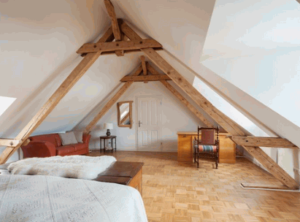
What Is The Average Cost Of A Loft Conversion?
The average cost of a loft conversion varies widely based on multiple factors, including the type of conversion and location, but typical prices generally range between £20,000 to £60,000 in the UK. For instance, in London, the costs might be on the higher end of this spectrum due to increased labor and material costs.
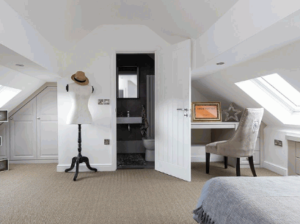
What Are The Ways To Save Money On A Loft Conversion?
Saving money on a loft conversion is possible with careful planning and strategic choices, such as opting for DIY elements, utilizing recycled materials, and obtaining multiple quotes from contractors to ensure competitive pricing.
DIY
Opting for DIY elements in a loft conversion can significantly save money, as homeowners can take on tasks themselves rather than hiring tradespeople for every aspect of the loft project. This approach not only enables individuals to personalize their spaces, but it also provides an opportunity for creative expression as they work to transform an underutilized area into a functional living space. While the potential for cost-saving is enticing, it’s crucial to understand the balance between DIY efforts and professional quality. Homeowners might reasonably consider tackling tasks such as painting, insulation, or installing simple shelving, yet should weigh these choices against more complex jobs like electrical wiring or plumbing that often require specialist knowledge to avoid future headaches.
Engaging in a loft conversion can be both rewarding and challenging. Here are a few considerations:
- Benefits:
- Cost Savings: DIY can lead to a substantial reduction in labor costs.
- Personalization: Homeowners can create spaces tailored to their needs.
- Challenges:
- Time Commitment: DIY tasks can be more time-consuming than anticipated, leading to project delays.
- Quality Assurance: Some tasks might require professional expertise to ensure safety and adherence to building regulations.
Ultimately, individuals must decide which aspects they feel confident taking on and where it might be wise to seek help.
Use Recycled Materials
Using recycled materials in a loft conversion can reduce costs while also promoting eco-friendly practices, as many reclaimed materials meet building regulations and contribute to sustainability.
This approach not only conserves natural resources but also minimizes waste, making it a win-win scenario for anyone looking to renovate their space. Developers and homeowners often discover that opting for such sustainable options can lead to substantial cost savings due to lower upfront expenses and potential tax benefits. For instance, materials like reclaimed wood, recycled metal, and repurposed bricks are not only affordable but also lend a unique character to the building.
- Reclaimed wood can be utilized for flooring, beams, and furniture, providing a rustic charm that new materials often lack.
- Recycled metal can serve as beams or connectors, offering durability and strength.
- Repurposed bricks can create stunning feature walls, aligning beautifully with aesthetic goals while adhering to building codes.
By choosing these materials, the loft conversion not only meets regulatory standards but also enhances its environmental appeal.
Choose A Smaller Conversion
Choosing a smaller loft conversion can significantly lower costs by reducing the amount of work and materials needed, while still providing valuable extra living space. Moreover, even a smaller loft conversion can increase property value, making it a worthwhile consideration.
By prioritizing compact designs, homeowners can enjoy substantial savings without sacrificing functionality. Smaller loft conversions often involve simple modifications that make efficient use of existing space, eliminating the need for elaborate structures that can drive up costs. For instance, a basic storage area or a cozy reading nook can be achieved with minimal alterations, offering a serene space for relaxation or organization.
- Design Example 1: A small office setup can fit comfortably under sloped ceilings, allowing for productive work hours at home.
- Design Example 2: Converting a section into a guest room can provide occasional accommodation without the extensive renovations required for larger builds.
- Design Example 3: A play area for children can encourage imaginative play while keeping toys organized and contained.
These smaller loft conversions highlight how practical adaptations can meet individual needs, all while maintaining budget-friendly approaches.
Get Multiple Quotes
Obtaining multiple quotes from contractors, especially in a city like London, can be an effective way to save money on a loft conversion, allowing homeowners to compare typical prices and negotiate better deals.
This approach not only helps in budgeting but also enables individuals to understand the market rates and the various services available. When reaching out to contractors, it is crucial to provide them with a clear outline of what is expected for the loft conversion project. This includes specific details like dimensions, desired materials, and any architectural plans, especially in a competitive market like London.
- Start by researching local contractors and checking their reviews.
- Always ask for detailed proposals that break down costs associated with materials, labor, and timelines.
- Keep an eye out for any hidden fees that might inflate the overall cost.
Once the proposals are in hand, it is beneficial to not only look at price but also factors such as the contractor’s experience and warranty on their work. Thorough comparisons can lead to not just savings but also quality assurance. Don’t shy away from negotiating terms—many contractors are willing to discuss pricing or compromise on specific elements of the project to meet budget constraints. Engaging in open dialogue can foster a better relationship and ultimately ensure quality work.
Negotiate With Contractors
Negotiating with contractors is a crucial step in ensuring a loft conversion stays within budget, as skilled negotiators can secure better pricing and value without compromising quality.
In today’s competitive market, achieving effective communication is essential for clients who want to make the most of their investment. When approaching a contractor, it’s vital to begin with a clear understanding of your project’s requirements and the scope of work involved. This not only aids in expressing your expectations but also fosters an environment of mutual respect.
- Start by doing thorough research on typical costs associated with loft conversions in your area.
- Don’t hesitate to gather multiple quotes from different contractors; this practice provides leverage when discussing prices.
- Establish a list of non-negotiables, such as quality standards and timelines, to prevent sacrificing essential aspects in exchange for lower costs.
Remember, the goal is to balance cost-saving measures with ensuring that work quality is not compromised. Open and transparent discussions significantly enhance the probability of successful negotiation outcomes.
